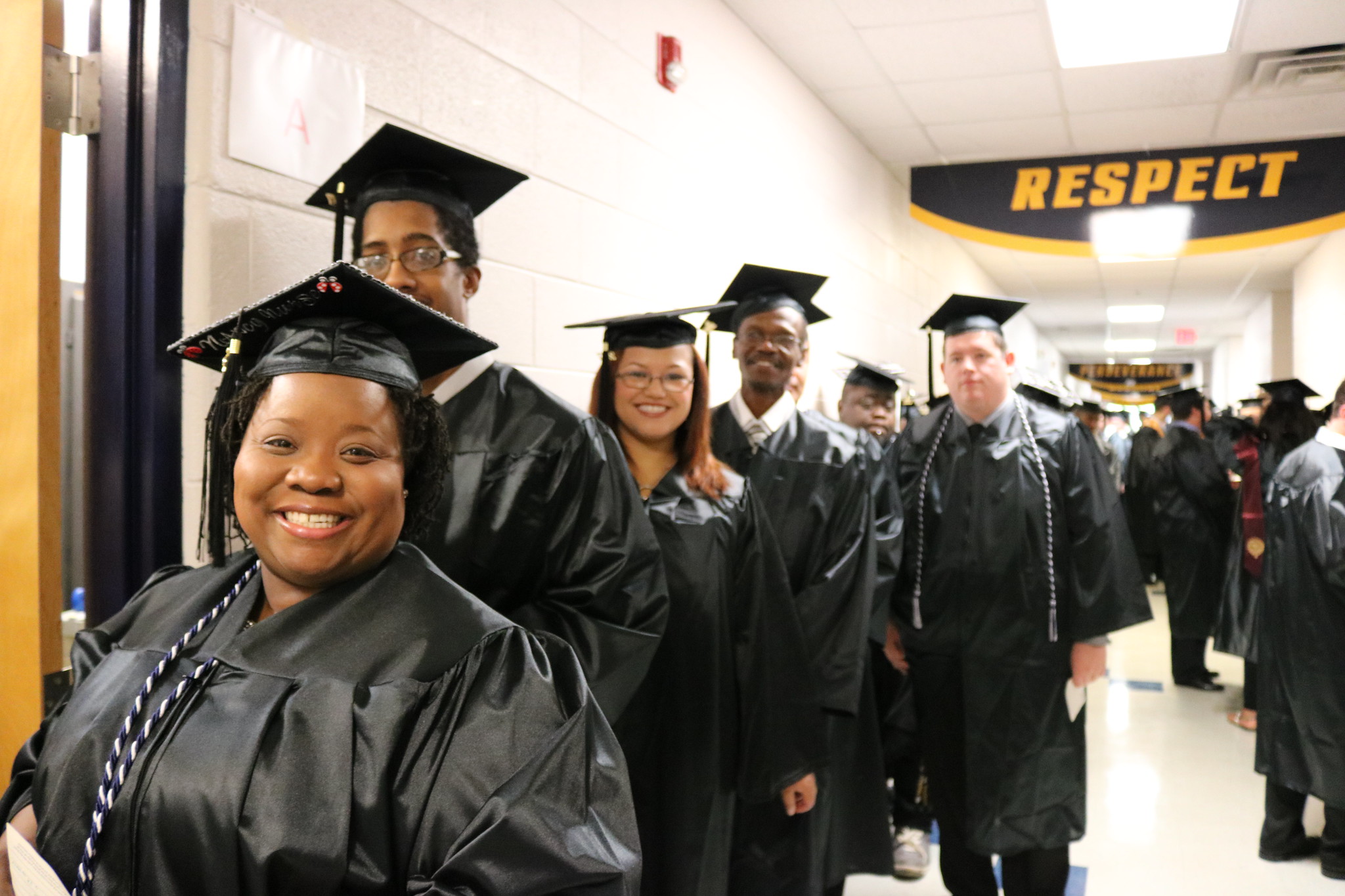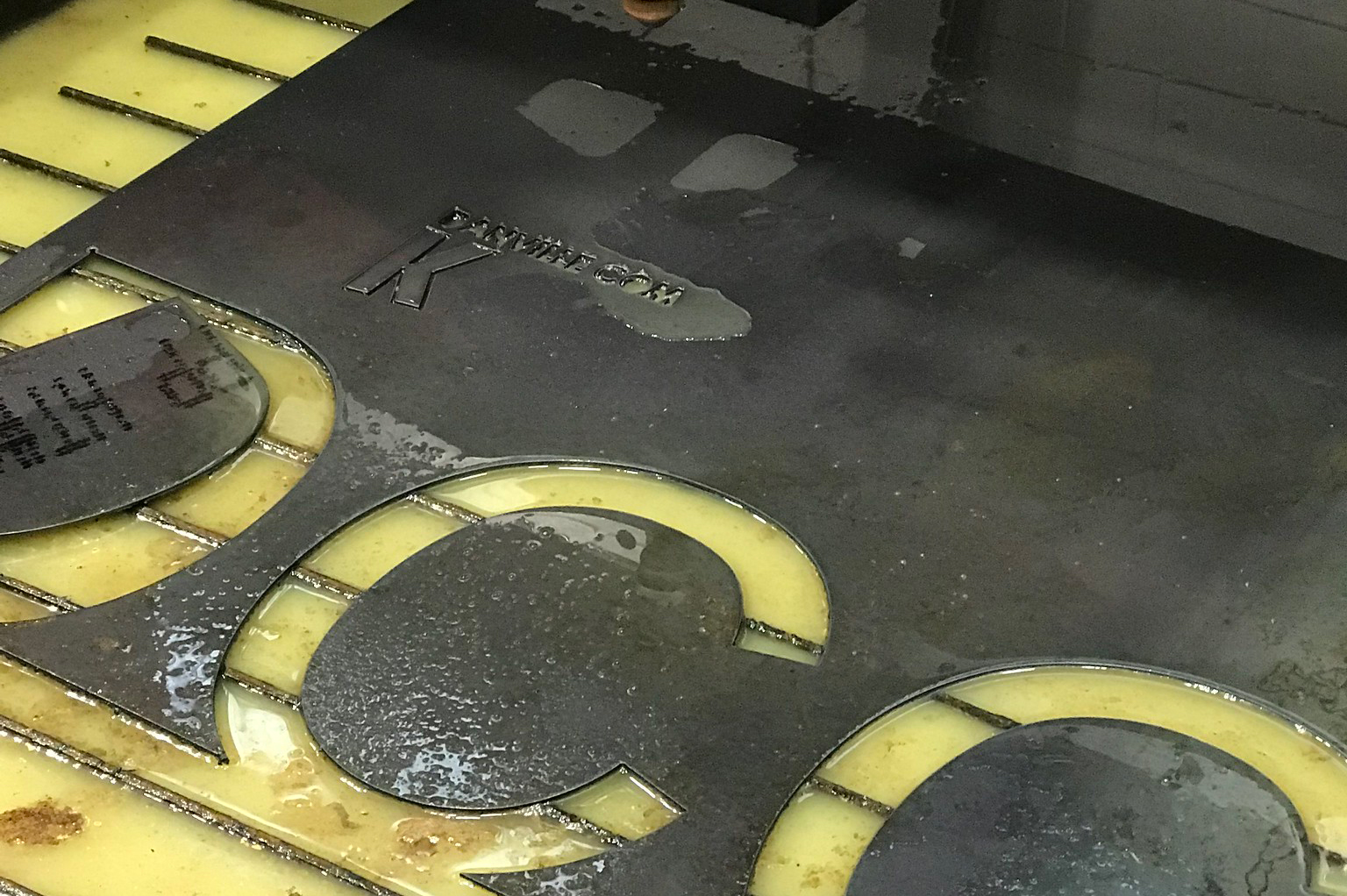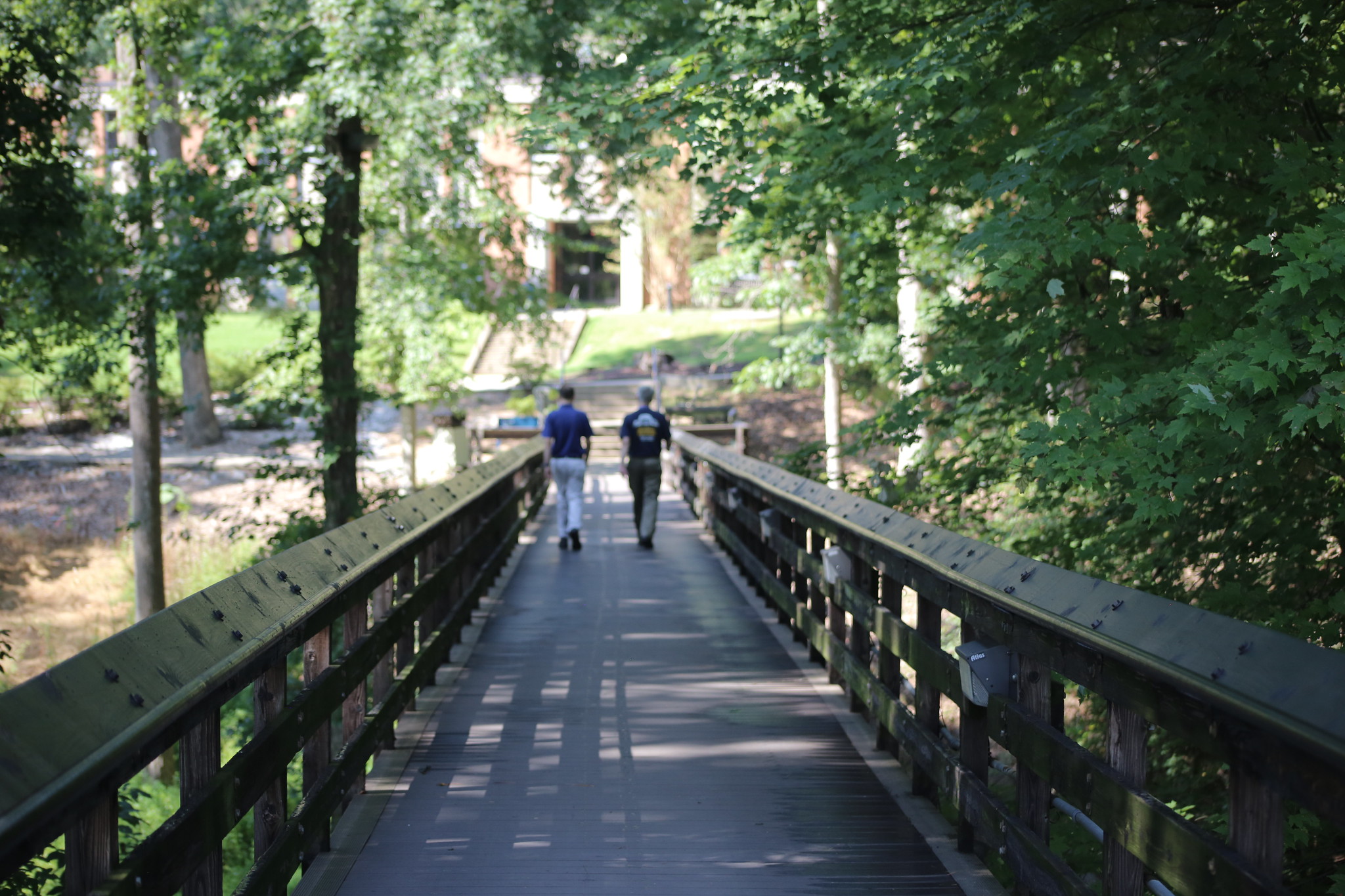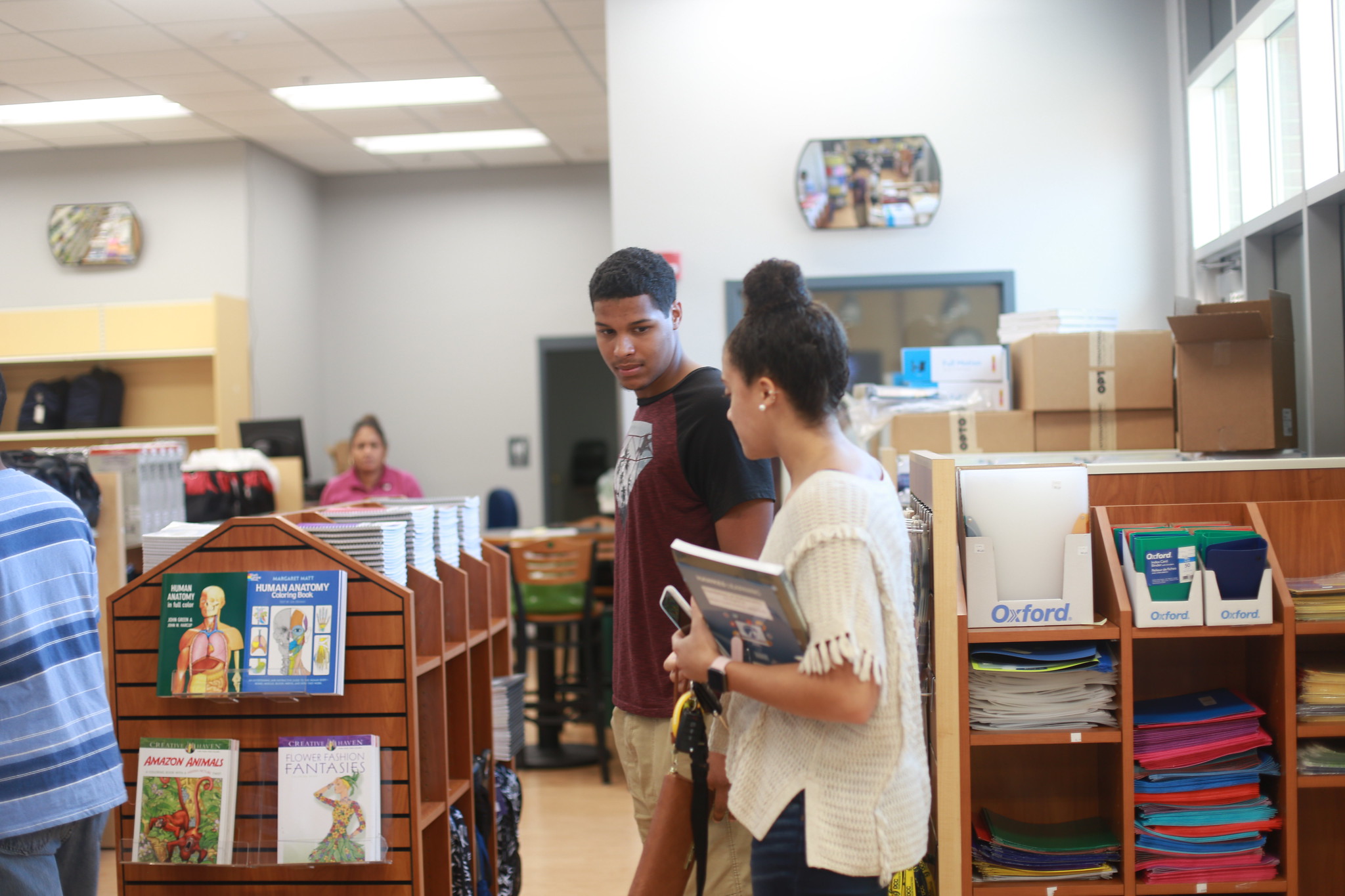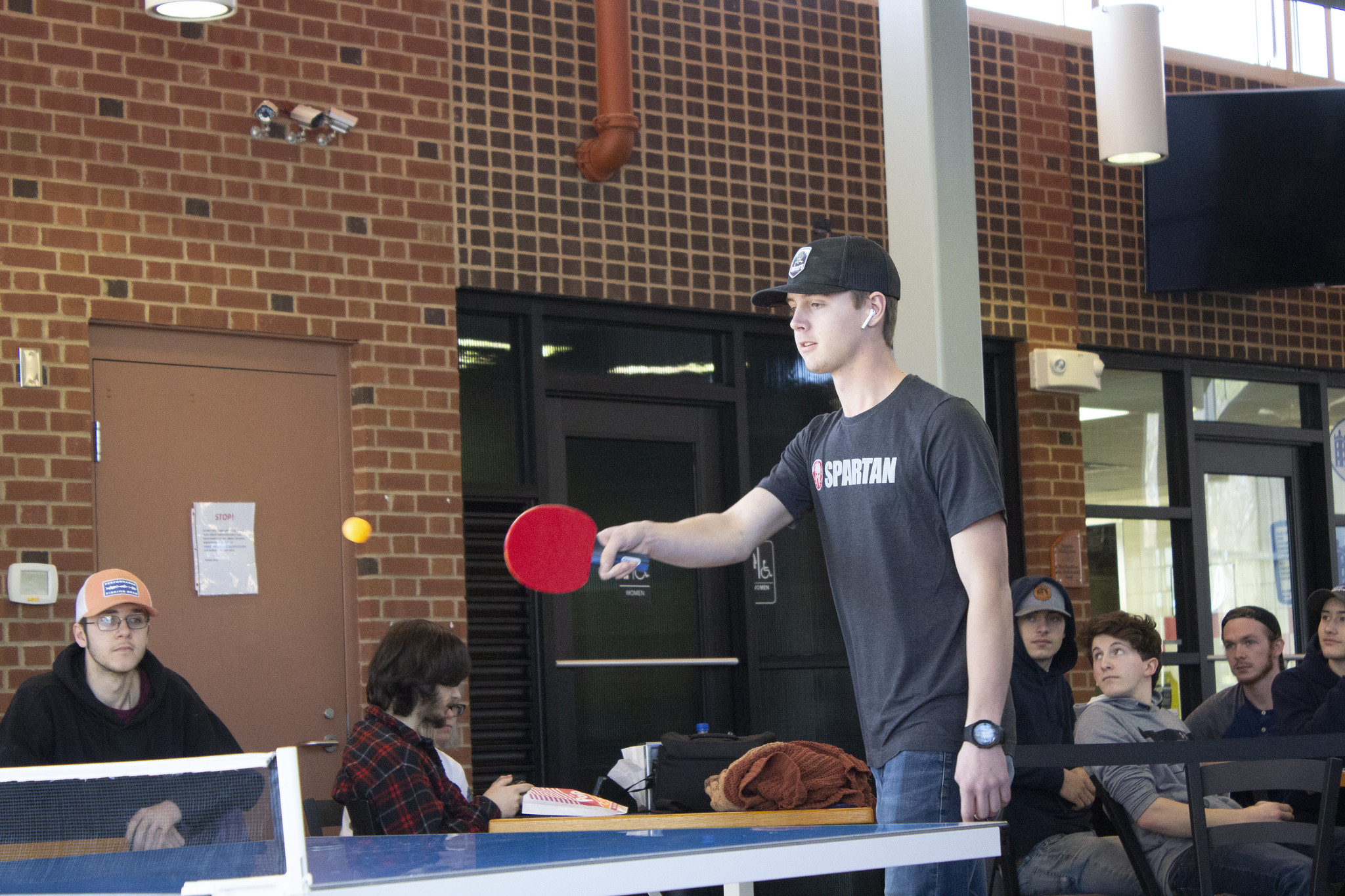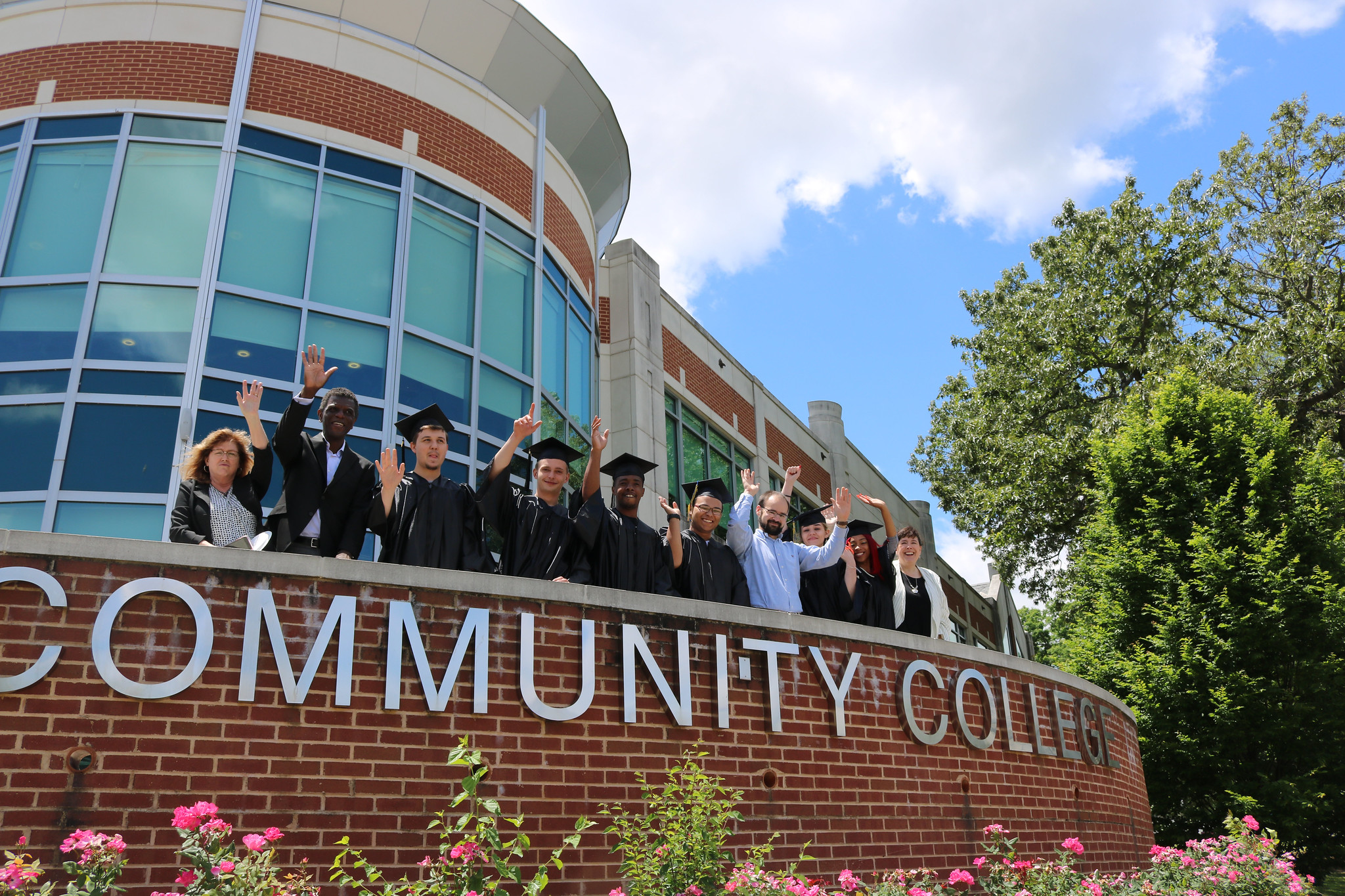A variety of mobility-related disabilities result from neuro-muscular and orthopedic impairments. These disabilities may be congenital, or they may be the result of an accident or illness. They may include conditions such as spinal cord injury, paralysis, cerebral palsy, severe forms of arthritis, polio/post polio, spinal bifida, orthopedic injury, or amputation, later stages of AIDS, stroke, and muscular dystrophy. Some students may have invisible disabilities that include pulmonary/respiratory disorders, cardiac conditions, epilepsy, cystic fibrosis, multiple sclerosis, Fibromyalgia and other limiting conditions.
Functional abilities and limitations will vary widely, even within one disability group. Some conditions are such that the person experiences pain, spasticity, or lack of coordination. In other conditions there periods of remission where the student seems to have no impairment of functions (e.g., multiple sclerosis). Some who use wheelchairs are able to stand but not walk. Others can walk with the aid of canes, crutches, braces, or walkers. (Some wheelchair users may have full use of their arms and hands, whereas others do not.) Using a wheelchair may help these individuals conserve energy or move about more quickly.
The best judge of what the student can or cannot do is the individual student. However, the student must present clear documentation from an outside source detailing necessary classroom and examination accommodations. This documentation must be present prior to the student enrolling in classes. The college must have adequate time to prepare to assist the student.
CHARACTERISTICS
- Classroom access may be difficult
- Eye-hand coordination may be decreased
- Notetaking and writing may be decreased due to weakness or paralysis
- Verbal communication may be impaired
- Physical stamina and endurance may be decreased
INTERACTION
- Speak directly to the student as you would any other class member.
- Converse with the student in a wheelchair at his or her eye level.
- Leaning on a wheelchair is inappropriate. The chair is part of the person’s body space.
- Using words like “walking” or “running” is appropriate; sensitivity to these words is not necessary.
- Ask if you can help if it appears the student needs assistance. Accept a “no thank you” graciously.
TECHNOLOGY
Adaptive computer devices are especially helpful for the person with limited hand use. Students should discuss software or equipment options that may assist them with their Vocational Rehabilitation case manager. The equipment should be used in labs or areas where the student can work in an integrated setting. The Learning Assistance Center may also have technology that would benefit the student. Examples of technology that may benefit the student include, but are not limited to the following:
- adapted mouse
- “sticky keys” software that eliminate use of mouse
- word prediction software
- voice input software
IN THE LAB
Laboratory work is an important part of a postsecondary education. Students who have mobility disabilities are not excluded from lab work because of their disability. Some accommodations may be necessary to make the experience worthwhile and safe. The student should discuss with the instructor early in the semester what strategies will be used. The student should be doing all of the thinking required for the assignment. For example, if the student uses a lab partner. The lab partner may manipulate the tools and equipment, while the student answers the related written assignment questions.
(In compliance with the Virginia State Higher Education Workgroup 2001 ADA Guidelines & The American Association for the Advancement of Science.)
OTHER MEDICAL DISABILITIES
There are other impairments, neurological and medical, which do not fit under the major categories already discussed but which are covered under 504/ADA. These disabilities can affect students by significantly impairing their energy level, memory, mobility, speech, vision or muscular coordination (e.g., heart condition, sickle cell anemia, hemophilia, arthritis, asthma, diabetes, respiratory disorders, seizure disorder, cancer, kidney problems, Tourette’s Syndrome, severe chronic pain, AIDS). In some cases, the degree of impairment may vary from one day to the next because of the nature of the medical condition, medication received, or therapy. Some conditions deteriorate year by year, resulting in emotional consequences for the student. Other students may need accommodations found elsewhere in this manual while some will need no accommodations at all. The following will assist you in working with the students in this category.
AIDS
Acquired Immune Deficiency Syndrome (AIDS) is caused by a virus that destroys the body's immune system. This condition leaves the person vulnerable to infections and cancers that can be avoided when the immune system is working normally. The virus is transmitted primarily through the exchange of bodily fluids. There is no evidence to date that it is transmitted through casual contact.
Manifestations of AIDS are varied, depending on the particular infections or diseases the individual develops. Extreme fatigue is a common symptom. Classroom adaptations will likewise vary.
Students with AIDS may be afraid to reveal their condition because of the social stigma, fear and/or misunderstanding surrounding this illness. Therefore, it is extremely important that confidentiality be strictly observed. If the topic should arise in class, faculty should deal openly and non-judgmentally with the issue, fostering an atmosphere of understanding.
Classroom accommodations will depend upon the student’s medical condition, which can range from no accommodations to more extensive accommodations.
Arthritis (Rheumatoid)
Arthritis affects people of every age, including children. Rheumatoid arthritis is the most common and is a total body (systemic) disease characterized chiefly by inflammation of the synovial joints (e.g., shoulder, elbow, wrist, knee, hip, ankle, and small joints).
Muscle weakness, reduction in muscle size, loss of joint movement, and pain with movement characterize the effects of arthritis and how it limits a person’s activities. It is important to remember is that each person is affected differently and the condition varies from one day to the next.
Students with rheumatoid arthritis may need Notetakers, and permission to tape record lectures. They may need extended time on tests, or use alternative testing measures (multiple choice or short answer exams instead of essays).
Autism
Autism and Pervasive Developmental Disorder (PDD) are neurological disabilities that affect social interaction, communication, and restrict activities and interests. Persons with more advanced language skills tend to use a small range of topics and have difficulty with abstract concepts. Those with autism often have difficulty with changes in routine or familiar surroundings. The classroom environment should be structured so that the program is consistent and predictable. Students with autism learn better and are less confused when information is presented visually as well as verbally.
Cancer
Cancer can occur in almost any organ system of the body, thus the particular disabling effects will vary greatly from one person to the other. Some people experience visual problems, lack of balance and coordination, joint pain, backache, headache, abdominal pain, drowsiness, lethargy, difficulty in breathing and swallowing, weakness, bleeding, and/or anemia.
The primary treatments for cancer are radiation therapy, chemotherapy, and surgery that may engender additional effects. Therapeutic treatment can cause violent nausea, drowsiness, fatigue, loss of academic functioning, and absences from class. Surgery can result in amputation, paralysis, sensory deficits, and language and memory problems.
Specific accommodations will depend upon the person’s condition and reaction to treatment.
Carpal Tunnel Syndrome
Carpal Tunnel Syndrome (CTS) is a condition caused by repetitive motion that can cause pain, tingling, numbness, and weakness in the fingers and thumb. CTS can begin suddenly or gradually. It often affects both hands and if not treated can lead to permanent nerve and muscle damage in the hands. CTS can occur at any age. In non-work related cases, CTS usually affects persons in their 50s. In work related cases, it can appear between the ages of 20 and 40. This condition is more common in women than in men. Students with CTS may need Notetakers, extended test times and deadlines for research reports.
Cerebral Palsy
Cerebral Palsy (CP) is caused by an injury to the motor center of the brain, which may have occurred before, during, or shortly after birth. Manifestations may include involuntary muscle contractions, rigidity, spasms, poor coordination, poor balance or spatial relations. Visual, auditory, speech, hand-function and mobility problems might occur.
Students with CP are all unique. For appropriate classroom accommodations, refer to the sections on speech, visual impairments, and/or mobility and orthopedic impairments.
Chronic Fatigue Syndrome
Chronic Fatigue Syndrome is known by many names such as CFIDS, CFS, chronic Epstein-Barr virus, the "yuppie" flu, and many other names. It is a complex illness characterized by incapacitating fatigue, neurological problems, and many other symptoms. The symptoms may include low-grade fever, sore throat, painful lymph nodes, muscle weakness, aching, sleep disturbance, vision, attention and cognitive problems.
Student accommodations will vary depending upon specific symptoms, which can encompass most of the accommodations listed previously.
Fibromyalgia
Fibromyalgia is an arthritis-related condition that causes widespread pain in the muscles and tendons at specific “tender points” throughout the body. Other symptoms include chronic fatigue and non-restful sleep. Stress, anxiety, and fatigue make this condition worse. In addition to medical treatment, other treatments that have been used include meditation, visualization, relaxation techniques, stress management, biofeedback, yoga and stretching exercises, and counseling.
Students with Fibromyalgia will vary greatly depending on their personal conditions. Their accommodations will be dependent upon the manifestation of each individual condition.
Lupus
Lupus is a chronic, autoimmune disease, which causes inflammation of various parts of the body, especially the skin, joints, blood, and kidneys. The immune complexes that build up in the tissues can cause inflammation, injury to tissues, and pain. The symptoms vary with each person, but may include achy joints, fever, prolonged or extreme fatigue, arthritis, skin rashes, kidney involvement, pleurisy, photosensitivity, hair loss, seizures, or mouth or nose ulcers. For most people, lupus is a mild disease affecting only a few organs. For others it may cause serious and even life-threatening problems. For the vast majority of people with lupus, effective treatment can minimize symptoms, reduce inflammation, and maintain normal bodily functions. Accommodations will be made on an individual basis.
Multiple Sclerosis
Multiple Sclerosis (MS) is a progressive disease of the central nervous system, characterized by a decline of muscle control. Symptoms range from mild to severe and may include blurred or double vision, legal blindness, tremors, weakness or numbness in limbs, unsteady gait, paralysis, slurred speech, or cognitive dysfunction. The age of onset usually occurs between 20 and 40, therefore, students are likely to have difficulty adjusting to their condition.
The course of MS is highly unpredictable. Periodic remission may last from a few days to several months. Striking inconsistencies in performance are not unusual. For the appropriate classroom accommodations, refer to the section(s) on speech, visual impairments, mobility and hand-function disabilities.
Muscular Dystrophy
Muscular Dystrophy refers to a group of hereditary, progressive disorders that most often occur in young people, producing degeneration of voluntary muscles of the trunk and lower extremities. The atrophy of the muscles results in chronic weakness and fatigue and may cause respiratory or cardiac problems. Walking, if possible, is slow and appears uncoordinated. Manipulation of materials in class may be difficult. Refer to the section on mobility and hand-function impairments for appropriate accommodations.
Seizure Disorder
Students with epilepsy and other seizure disorders are sometimes reluctant to divulge their conditions because they fear being misunderstood or stigmatized. Myths about this disorder include it being a form of mental illness or it is contagious and untreatable. These misconceptions have arisen because the ultimate causes remain uncertain. There is evidence that hereditary factors may be involved and that brain injuries and tumors, occurring at any age, may give rise to seizures. What is known is that seizures result from imbalances in the electrical activity of the brain.
Three distinct types of seizures exist:
Petit Mal means small seizure and is characterized by eye blinking or staring. It begins abruptly with a sudden dimming of consciousness and may last only a few seconds. Whatever the person is doing is suspended for a moment but resumed again as soon as the seizure is over. Often, because of its briefness, the seizure may go unnoticed by the individual as well as by others.
Psychomotor seizures range from mild to severe and may include staring, mental confusion, uncoordinated and random movement, incoherent speech and behavior outbursts, followed by immediate recovery. They may last from two minutes to a half hour. The person may have no recollection of what happened, but may experience fatigue.
Grand Mal seizures may be moderate to severe and may be characterized by generalized contractions of muscles, twitching and limb jerking. A few minutes of such movements may be followed by unconsciousness, sleep, or extreme fatigue.
Students with seizure disorders are often under preventative medication, which may cause drowsiness and temporary memory problems. Such medication makes it unlikely that a seizure will occur in class.
In The Event of a Grand Mal Seizure, Follow This Procedure:
- Call for emergency assistance, or have a student do so.
- Keep calm. Although its manifestations may be intense they are generally not painful to the individual.
- Remove nearby objects that may injure the student during the seizure.
- Help lower the person to the floor and place cushioning under his/her head.
- Turn the head to the side so that breathing is not obstructed.
- Loosen tight clothing.
- Do not force anything between the teeth.
- Do not try to restrain bodily movement.
After a seizure, faculty should deal forthrightly with the concerns of the class in an effort to forestall whatever negative attitudes may develop toward the student.
Tourette’s Syndrome
Tourette’s Syndrome is a neurological disorder characterized by involuntary movements and vocalizations that occur repeatedly in the same manner. The following are more detailed characteristics: involuntary blinking of eyes, head jerking, flailing arms, throat clearing, peculiar noises, and ritualistic behaviors. The movement (tic) is involuntary and as irresistible as a sneeze.
Typically tics increase as a result of tension or stress and decrease with relaxation or concentration on an absorbing task. The student’s movement and noises can be annoying or even somewhat disturbing to the class. Remember, they are occurring involuntarily so do not react with anger or annoyance.
The severity of symptoms ranges from very mild (barely noticeable) to severe and disabling. Other symptoms may include obsessive-compulsiveness, attention deficit disorder or a learning disability. Classroom accommodations will vary with the condition. Tests in a private room, which can be proctored by the instructor, may be necessary. The student can then focus all energy on the test instead of on suppressing the tics. Permission for the student to leave the classroom when tics become overwhelming may help.
If the behavior is just poor behavior and not the result of the Tourette’s Syndrome it should not be tolerated. Speak to the student in private about his or her behavior and your classroom expectations.
Traumatic Brain Injury
Traumatic Brain Injury (TBI) also known as traumatic head injury (THI) is an acquired injury to the brain caused by external physical force, resulting in a total or partial functional disability or psychosocial impairment, or both that adversely affects educational, social, or daily performance.
TBI is the leading cause of death and disability in children and adolescents in the United States. The most frequent causes of TBI are related to motor vehicle crashes, falls, sports, and abuse or assault.
Students with brain injuries are becoming increasingly more prevalent on college campuses. As a result of TBI the student can be affected physically, cognitively, and/or psychosocially or behaviorally. Any or all of these impairments may be present to different degrees.
Classroom accommodations will be similar to those for learning disabilities, attention deficit disorder, psychological disorders, or physical impairments discussed in previous sections depending on the student’s affected areas.
In order to work constructively with students with TBI, the following may be helpful for faculty, staff, or tutors. This is what the student needs in order to re-learn and understand concepts after an accident. Every point might not apply as an academic accommodation, but it presents a picture of people with TBI.
CHARACTERISTICS
- Memory loss
- Distractibility
- Short attention span
- Low threshold for frustration
- Inability to deal with abstract and figurative concepts
- Reduced stamina


